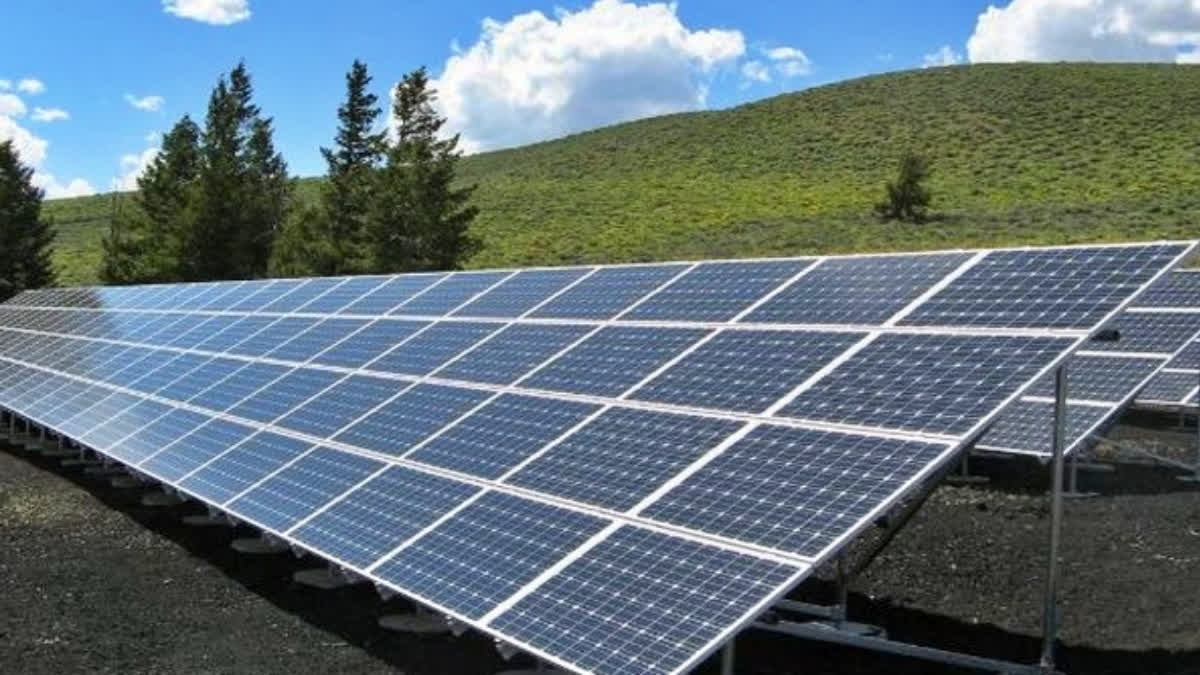India is expected to have the highest energy demand growth of any country globally over the next 30 years. That's why it's crucial to have a reliable source of energy. We can't rely on coal and other sources anymore, so we need to expand our capacity for solar power. Despite an increase in coal production, India is committed to achieving 500 GW of renewable energy capacity by 2030. Also, the country aims for 50% of electricity generation from non-fossil fuel sources by 2030, having already reached 43%, with renewables contributing 30% to the total installed capacity.
Prime Minister Narendra Modi recently launched Pradhan Mantri Suryodaya Yojana. In the interim budget 2024, Finance Minister Nirmala Sitharaman announced that the beneficiaries of this scheme will receive free electricity up to 300 units per month and can sell surplus solar power, potentially saving them Rs 15000 to Rs 18000 annually.
This program aims to provide solar power to 1 crore households across India, which is pretty amazing. However, as of 31 July 2023, only 2.2 GW of rooftop installations were reportedly installed in Indian homes. We've got a lot of work to do. The government did launch that program in 2014, but not much has been said about it since. We'll have to wait and see if this new program will successfully achieve its goals.
As we move towards a more sustainable future, the government's efforts to promote rooftop solar systems are becoming more crucial than ever. The National Rooftop Scheme, launched in 2014, was an important step towards achieving a cumulative installed capacity of 40 gigawatts (GW) by 2022. However, the target was not met, and as a result, the government extended the deadline to 2026. Looking ahead, there is a renewed effort by the government to achieve this target, as seen in Pradhan Mantri Suryodaya Yojana.
This financial support aimed at encouraging more households to embrace solar energy and reduce their carbon footprint is a positive step towards a cleaner and greener future. With more and more people recognising the importance of renewable energy sources, we can hope to see a significant increase in the adoption of solar rooftop systems in the coming years. The Pradhan Mantri Suryodaya Yojana announcement is a significant step towards providing every Indian household access to sustainable energy.
By equipping 1 crore poor to middle-class households with rooftop solar panels, the scheme aims to reduce their dependence on traditional power grids, making them more self-reliant and reducing their electricity bills. This will also reduce our reliance on fossil fuels and the load on the already burdened power grid, making electricity more accessible. The use of solar energy will not only create new job opportunities but also contribute to a cleaner and greener environment. With the implementation of this scheme, we can look forward to a future where India becomes a global leader in renewable energy.
To benefit from the Pradhan Mantri Suryodaya Yojana, there are specific eligibility criteria that households must meet. Applicants must be permanent citizens of India. The applicant's annual income should not exceed a specified limit (to be determined). Applicants must possess the necessary documents for verification, including an Aadhar card, income certificate, domicile certificate, mobile number, electricity bill, bank passbook, passport-size photo, and ration card. The Ministry of New and Renewable Energy (MNRE) is currently working on issuing guidelines for the scheme, including details about subsidies and rationalisation. Once the guidelines are released, interested households can apply online through the official website.
Solar power in India has grown to around 73.31 GW as of December 2023. However, the rooftop solar installed capacity is only around 11.08 GW, which is pretty far from the goal of 40 GW by 2022.
If we talk about the states, Rajasthan is leading the way with 18.7 GW of solar capacity, followed by Gujarat with 10.5 GW. But it's important to note that this is the total solar capacity, not just rooftop solar. Gujarat leads the way in rooftop solar with 2.8 GW, followed by Maharashtra with 1.7 GW.
Solar power has the major share in India's current renewable energy capacity of around 180 GW. Out of this, solar power contributes 72.3 GW, followed by Large Hydro with 46.88 GW. But there's still a lot of room for growth in rooftop solar installations. We've made great progress already, but we must keep pushing to reach the desired target of 40 GW by 2022.
Rooftop solar panels, also known as photovoltaic panels, provide a constructive solution to reduce our reliance on non-renewable energy sources. By installing these panels on building rooftops, we can harness the sun's power and convert sunlight into electricity. This helps to reduce the consumption of grid-connected electricity and ultimately saves costs for consumers. While an upfront capital investment is required to install a solar rooftop system, the maintenance costs are minimal in the long term. By investing in this sustainable source of energy, we can not only reduce our electricity bills but contribute to environmental conservation by minimising carbon emissions. Electricity generated from the rooftop solar system can be used to meet the buildings’ energy demand, charge batteries for later use, or can be exported to the electricity grid. Apart from the solar PV panels, a rooftop solar system also has other components such as an inverter, module mounting structure, wires and cables, monitoring and safety equipment and meters, etc.
